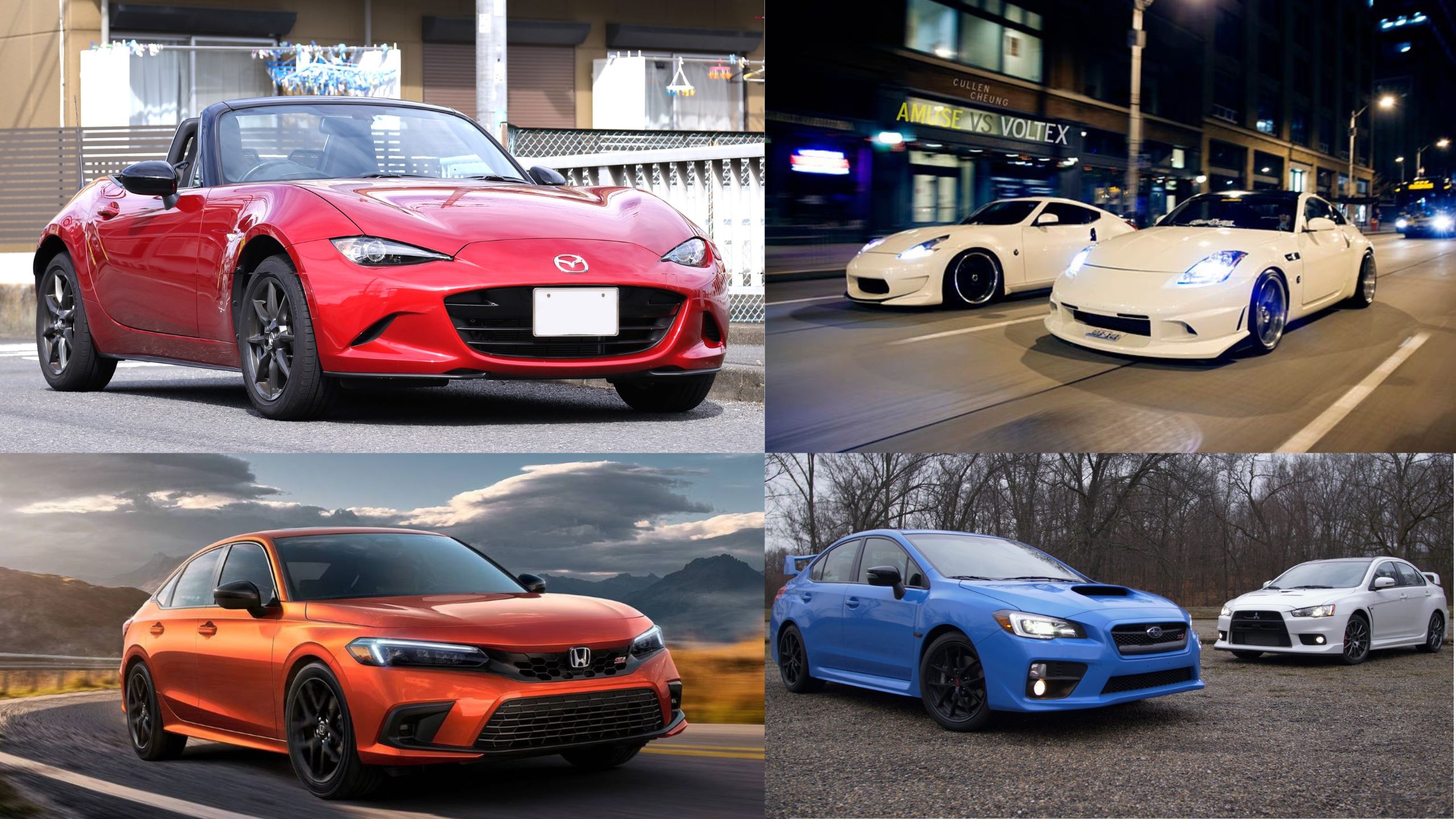Automotive customization offers enthusiasts a chance to transform factory vehicles into personalized masterpieces. For those seeking the thrill of modification without breaking the bank, several budget-friendly sports cars provide the perfect foundation.
These vehicles combine affordability with excellent potential for enhancement across multiple dimensions from engine performance and handling to aesthetics and technology.
What makes these platforms special is their combination of accessible pricing, robust aftermarket support, and inherently capable designs that respond well to upgrades.
Whether you’re looking to build a weekend track warrior, a show-stopping visual standout, or a balanced daily driver with enhanced capabilities, these ten vehicles represent the ideal starting points for your automotive journey.
Each one brings unique strengths to the table while maintaining a budget-friendly entry point that leaves room in your wallet for the modifications that will truly make it your own.
1. Mazda MX-5 Miata
The Mazda MX-5 Miata is perhaps the quintessential affordable sports car platform for modifications. Since its introduction in 1989, this lightweight roadster has earned a devoted following for its perfect balance of affordability, reliability, and pure driving pleasure.
Starting with a used NA (1989-1997) or NB (1999-2005) model for as little as $5,000-$8,000, or newer NC and ND generations for $10,000-$25,000, the Miata offers accessible entry points across various budgets.
What makes the Miata exceptionally modification-friendly is its lightweight chassis, typically ranging from 2,100 to 2,400 pounds depending on generation. This low mass means that even modest power upgrades translate to significant performance improvements.
The aftermarket support is truly staggering, with everything from simple bolt-on parts to complete engine swap kits available from countless suppliers.
Performance modifications typically begin with suspension upgrades. Coilovers from brands like Ohlins, and Fortune Auto, or budget-friendly options from Tein dramatically improve handling characteristics.
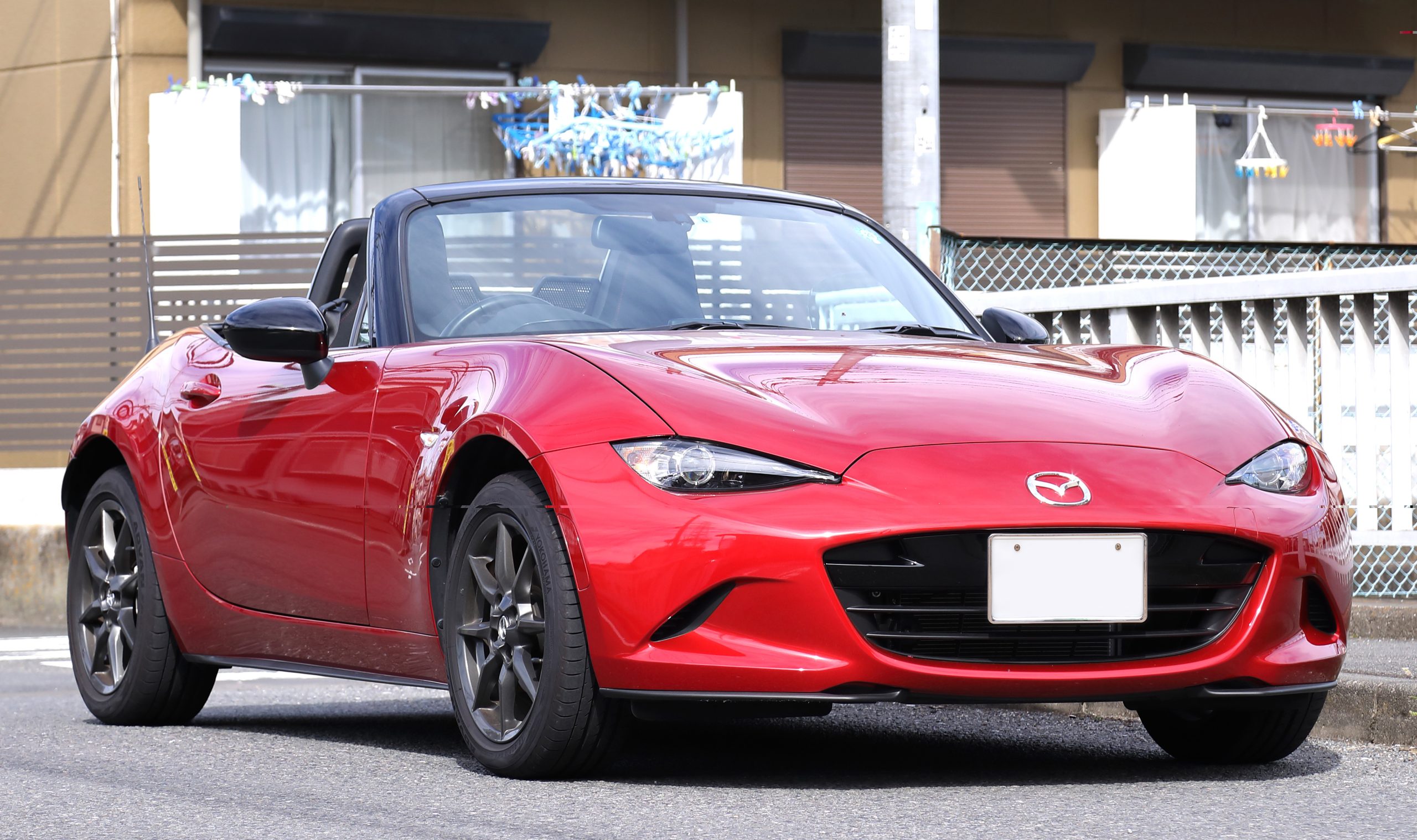
Power enhancements start with intake and exhaust modifications, but enthusiasts often progress to forced induction via turbocharging or supercharging kits from companies like Flyin’ Miata, which can boost power from the stock 130-181hp to well over 250hp.
For the truly ambitious, engine swaps have become a Miata specialty. The compact engine bay has been fitted with everything from Honda K-series engines to GM LS V8s, completely transforming the car’s character.
Chassis reinforcement through bracing and roll bars addresses the convertible platform’s inherent flexibility, creating a more responsive foundation for track use.
Aesthetically, the Miata responds well to both subtle and dramatic changes. Body kits ranging from OEM-plus looks to wide-body transformations allow owners to create unique visual identities.
The simple, accessible nature of the car’s design makes it an ideal learning platform for DIY enthusiasts taking their first steps into automotive customization.
2. Honda Civic Si
The Honda Civic Si represents one of the most versatile and accessible platforms in the budget performance world. With models available from the early 1990s through today, entry points range from $3,000 for older models to around $20,000 for recent examples.
What makes the Civic Si special is its combination of everyday practicality with genuine sporting credentials and Honda’s legendary reliability.
At the heart of the Civic Si’s modification potential is Honda’s famed VTEC technology and high-revving naturally aspirated engines. These powerplants respond exceptionally well to bolt-on modifications.
Simple upgrades like cold air intakes, header-back exhaust systems, and ECU tuning can yield gains of 15-25 horsepower over stock while maintaining daily drivability.
For those seeking more substantial power, forced induction options abound, with numerous turbocharger kits capable of pushing output well beyond 300 horsepower. The Civic platform benefits from Honda’s racing heritage, with suspension geometry that responds remarkably well to upgrades.
Coilover kits from manufacturers like KW, BC Racing, or Fortune Auto transform handling dynamics, while upgraded sway bars and chassis bracing further reduce body roll and increase responsiveness.
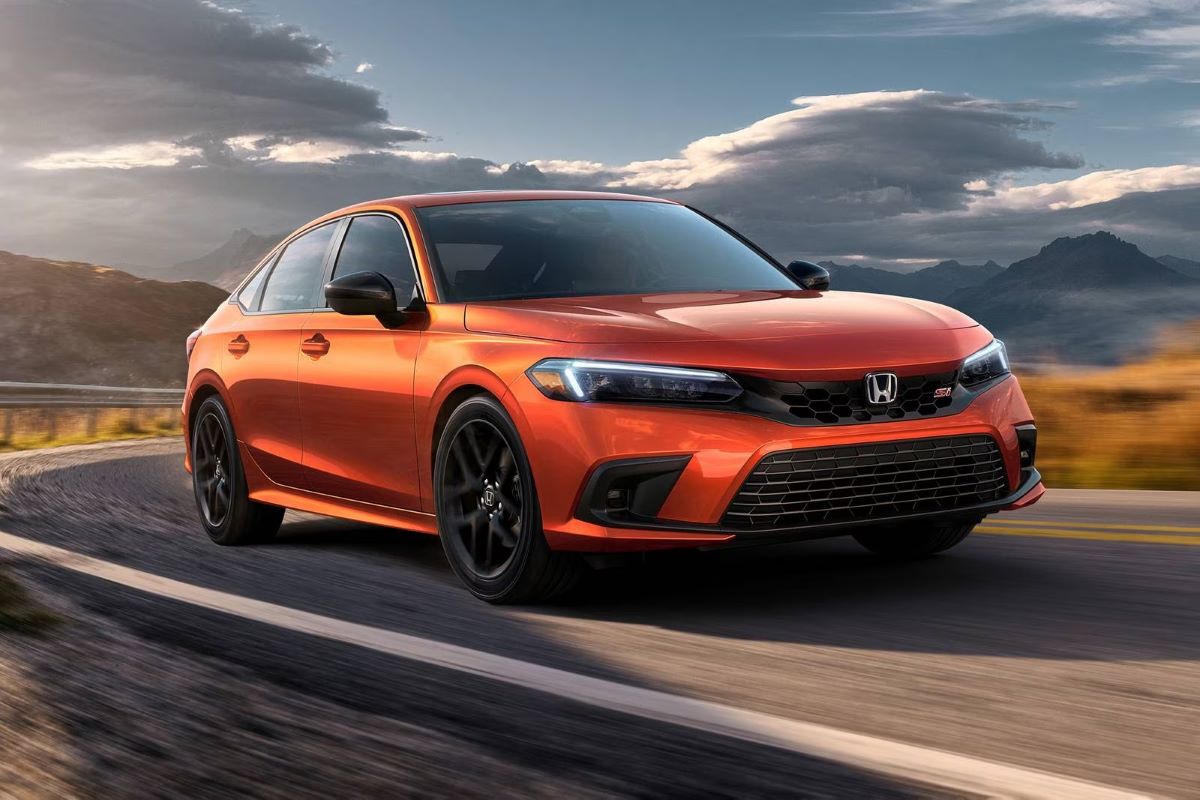
The front-wheel-drive layout, often considered a limitation in sports cars, becomes an advantage in specific motorsport disciplines like autocross, where properly modified Civics regularly outperforms more powerful rear-wheel-drive competitors.
What truly sets the Civic Si apart in the modification world is the vast interchangeability of parts across different Honda models. Engine swaps have become a cornerstone of Civic customization, with enthusiasts frequently upgrading to more powerful Honda engines like the B18C from the Integra Type R or the K20/K24 series.
These “all-Honda” swaps typically offer better reliability than cross-manufacturer options. Visually, the Civic’s clean lines provide an excellent canvas for personalization.
The extensive body kit options range from subtle OEM+ aesthetics to aggressive wide-body conversions. The massive aftermarket support means owners can build anything from period-correct 1990s tuner cars to modern performance machines.
Interior upgrades benefit from the Civic’s practical layout, with options for complete dashboard conversions, modern infotainment retrofits, and performance instrumentation.
This combination of practical usability with genuine performance potential makes the Civic Si one of the most well-rounded platforms for enthusiasts on a budget.
3. Toyota 86/Subaru BRZ/Scion FR-S
The Toyota 86 platform (also sold as the Subaru BRZ and formerly as the Scion FR-S) represents one of the most compelling modern entry points into sports car customization.
Introduced in 2012 as a collaborative effort between Toyota and Subaru, these affordable rear-wheel-drive coupes can now be found on the used market starting around $12,000-$18,000, with newer examples commanding $20,000-$30,000.
What makes this platform special is its purpose-built sports car design from the ground up. With a lightweight chassis (approximately 2,800 pounds), rear-wheel drive, and a low center of gravity thanks to its Subaru-derived flat-four engine, the 86/BRZ offers handling dynamics that punch well above its price point.
The chassis was engineered specifically for modifications, with strengthened mounting points and accessible component placement. The 2.0-liter naturally aspirated FA20 engine (2.4-liter in second-generation models) serves as both the platform’s most criticized aspect and its greatest opportunity.
While the stock output of 200-228 horsepower feels adequate but not thrilling, the engine bay’s design accommodates numerous forced induction solutions.
Popular turbocharger kits from manufacturers like GReddy, HKS, and COBB can boost power to 300+ horsepower while maintaining reliability with proper tuning. Supercharger options from companies like Edelbrock and HKS offer more linear power delivery with less complexity.
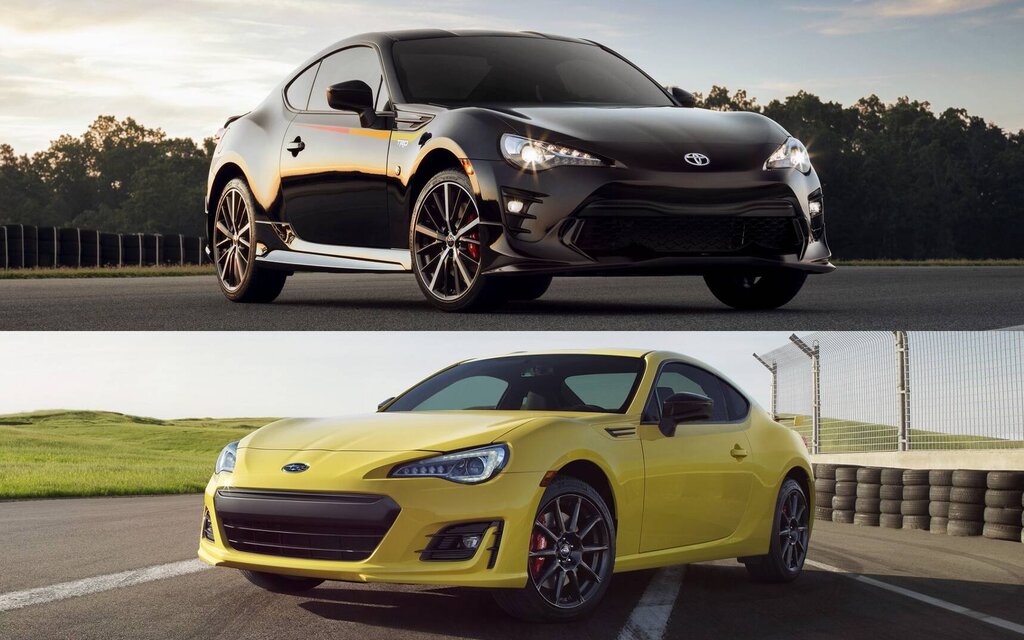
Suspension modifications represent the most cost-effective performance enhancement for these cars. Premium Coilover systems dramatically sharpen the already capable handling, while chassis bracing and wider, stickier tires transform the car into a genuine corner carver.
The factory limited-slip differential provides a solid foundation for power delivery that many competitors lack at this price point. Aesthetically, the 86/BRZ benefits from a design language that lends itself to customization.
The pronounced fender bulges and compact proportions respond well to both subtle enhancements and dramatic wide-body conversions. Companies like Rocket Bunny/Pandem and Liberty Walk offer comprehensive visual transformation kits that have become iconic in the tuning community.
The interior, while spartan in stock form, features an ergonomic, driver-focused layout that’s easily upgraded. From simple seat replacements to complete dashboard overhauls incorporating modern digital displays, the platform accommodates various interior visions while maintaining its focused, sporty character.
What truly sets the 86/BRZ apart is how it recaptures the spirit of accessible, balanced sports cars that dominated the 1990s Japanese performance scene, updated with modern safety, technology, and reliability.
4. Ford Mustang
The Ford Mustang stands as an American icon in the budget performance world, offering exceptional bang-for-buck and virtually limitless modification potential.
With used examples ranging from $5,000 for older models to around $25,000 for recent V8-powered GTs, the Mustang provides multiple entry points for enthusiasts at different budget levels.
The Mustang’s greatest strength as a modification platform lies in its robust V8 options, particularly the 4.6L and 5.0L “Coyote” engines found in models from 1996 onward.
These powerplants respond remarkably well to basic bolt-on modifications such as cold air intakes, exhaust headers, and cat-back systems, typically yielding 30-50 additional horsepower without forced induction.
For those seeking more substantial power, the aftermarket offers numerous supercharger kits capable of pushing output beyond 600 horsepower while maintaining streetable drivability.
Even the more affordable V6 and turbocharged EcoBoost four-cylinder variants provide excellent foundations for modification. The EcoBoost platform, in particular, responds exceptionally well to tuning adjustments, often gaining 60+ horsepower with simple software modifications and supporting hardware upgrades.
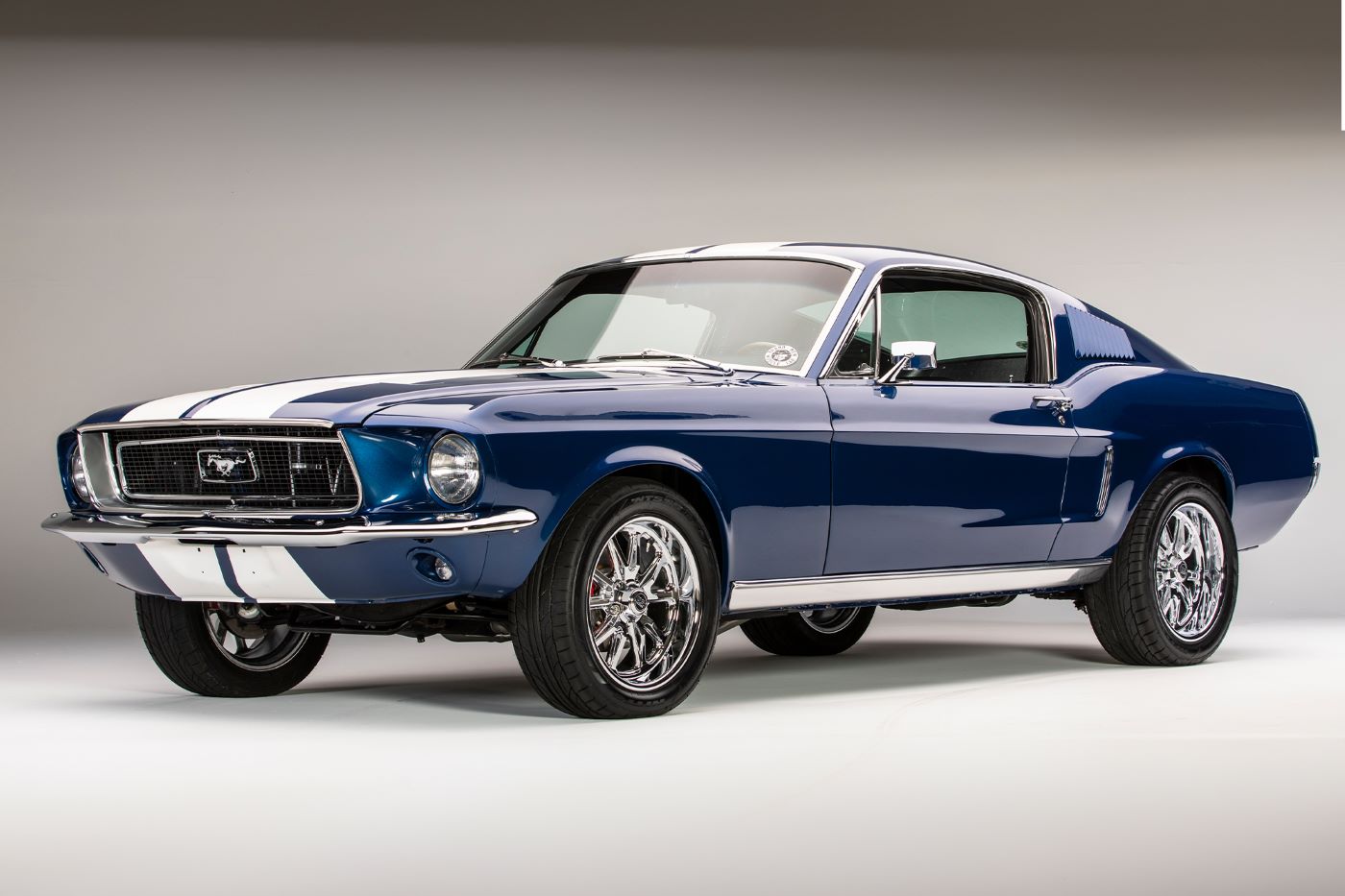
The Mustang’s solid rear axle (in pre-2015 models) was often criticized by purists but offers distinct advantages for drag racing applications, where its simplicity and strength excel under hard launches.
Post-2015 models with independent rear suspension provide a more balanced platform for all-around performance, responding well to track-focused suspension upgrades from companies like Maximum Motorsports, BMR, and Steeda.
Body and aesthetic modifications benefit from the Mustang’s iconic design language and massive aftermarket support. Options range from subtle chin spoilers and quarter window louvers that enhance the factory aesthetics to complete visual transformations through wide-body kits, custom hoods, and aggressive rear spoilers.
The interior similarly offers extensive customization options, from simple seat upgrades to complete dashboard conversions and modern technology integration.
What truly distinguishes the Mustang in the modification world is Ford’s exceptional factory support for performance enthusiasts. The Ford Performance catalog offers everything from warranty-backed power upgrades to complete “crate engines” capable of over 700 horsepower.
This factory backing, combined with unparalleled aftermarket support, means that Mustang owners can build anything from weekend cruisers to professional-grade race cars without leaving the platform.
The Mustang’s front-engine, rear-wheel-drive layout provides predictable handling characteristics that make it accessible for developing drivers while still offering room for growth as skills advance.
This combination of approachable performance, massive modification potential, and iconic styling makes the Mustang one of the most versatile platforms for automotive personalization.
Also Read: 10 Affordable Cars With Industry-Leading Airbag Systems
5. Nissan 350Z/370Z
The Nissan Z series, particularly the 350Z (2003-2008) and 370Z (2009-2020), represents one of the most compelling value propositions in the sports car world.
These purpose-built, rear-wheel-drive coupes can be found on the used market for $8,000-$15,000 for 350Z models and $15,000-$25,000 for 370Zs, making them accessible entry points into serious performance territory.
At the heart of both Z models are naturally aspirated V6 engines the VQ35DE/HR in the 350Z producing 287-306 horsepower, and the VQ37VHR in the 370Z delivering 332 horsepower.
These powerplants represent the platforms’ greatest strengths, offering robust construction that handles modification exceptionally well. Basic bolt-on upgrades like intakes, exhaust systems, and camshafts can yield 20-40 additional horsepower while maintaining natural aspiration.
For those seeking more substantial power, forced induction options abound, with twin-turbo kits capable of pushing output beyond 500 horsepower with proper supporting modifications.
The Z platform’s chassis dynamics provide an excellent foundation for handling improvements. The factory suspension, while competent, leaves room for significant enhancement.
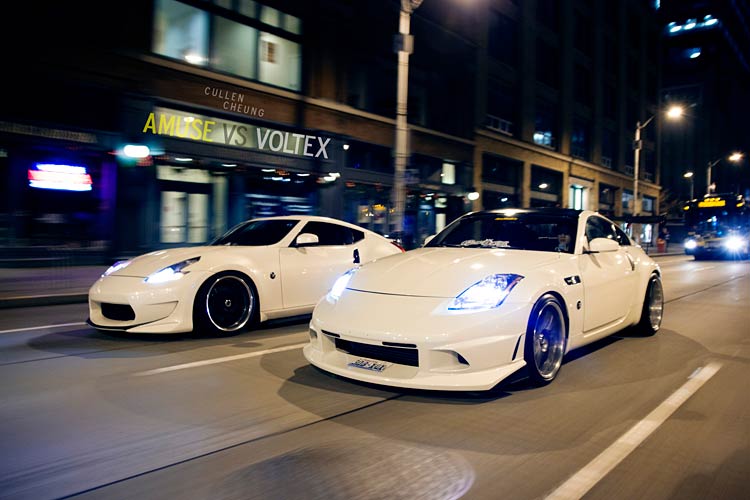
Coilover systems from manufacturers like KW, BC Racing, or Fortune Auto transform the car’s handling characteristics, reducing body roll and increasing cornering capabilities.
The 370Z’s shorter wheelbase and stiffer structure offer particular advantages for technical driving, while both generations respond well to chassis bracing and polyurethane bushing upgrades.
Aesthetically, the Z cars feature distinctive, athletic styling that lends itself to modification. The pronounced fender bulges and aggressive stance serve as excellent starting points for visual customization. Wide-body kits from companies like Rocket Bunny/Pandem have become particularly popular, dramatically enhancing the car’s presence.
More subtle modifications like front lip spoilers, rear diffusers, and tasteful wing options allow for personalization without radical transformations.
Drivetrain upgrades represent another area where the Z platform excels. The manual transmission models benefit from clutch and flywheel upgrades that improve both durability and performance feel, while limited-slip differential modifications enhance power delivery during aggressive driving.
For track-focused builds, cooling system upgrades address the platform’s tendency to run hot under sustained high-performance conditions. What sets the Z cars apart from many competitors is their focused, purpose-built nature.
Unlike converted economy cars, the Z was designed from the ground up as a sports car, with proportions and weight distribution optimized for performance. This fundamental engineering advantage means that modifications build upon an already capable foundation rather than attempting to overcome inherent design compromises.
The Z platform also benefits from extensive motorsport development, with factory-backed racing programs providing insights that filter down to street applications. This racing heritage shows how cohesively the cars respond to a balanced approach to modifications.
6. Volkswagen Golf GTI
The Volkswagen Golf GTI stands as the definitive European hot hatchback and one of the most well-rounded platforms for modification. With used examples ranging from $5,000 for early fifth-generation models to around $25,000 for recent iterations, the GTI offers European engineering and refinement at accessible price points.
What sets the GTI apart in the modification world is its sophisticated turbocharged engine architecture. From the 1.8T engines in earlier models to the EA888 2.0T in more recent generations, these powerplants respond exceptionally well to relatively simple modifications.
Basic ECU tunes from companies like APR, COBB, or Unitronic can increase output by 60-80 horsepower and significantly boost torque, transforming the driving experience with minimal investment.
More comprehensive builds incorporating upgraded turbochargers, intercoolers, and supporting fuel system modifications can push output beyond 350 horsepower while maintaining the factory engine block.
The GTI’s sophisticated multi-link suspension design provides a solid foundation for handling modifications. Coilover systems from European specialists like KW, Bilstein, or H&R offer dramatic improvements in handling precision without sacrificing comfort.
The front-wheel-drive architecture, often viewed as a limitation in pure sports cars, becomes an advantage in daily usability while still responding well to performance-oriented modifications.
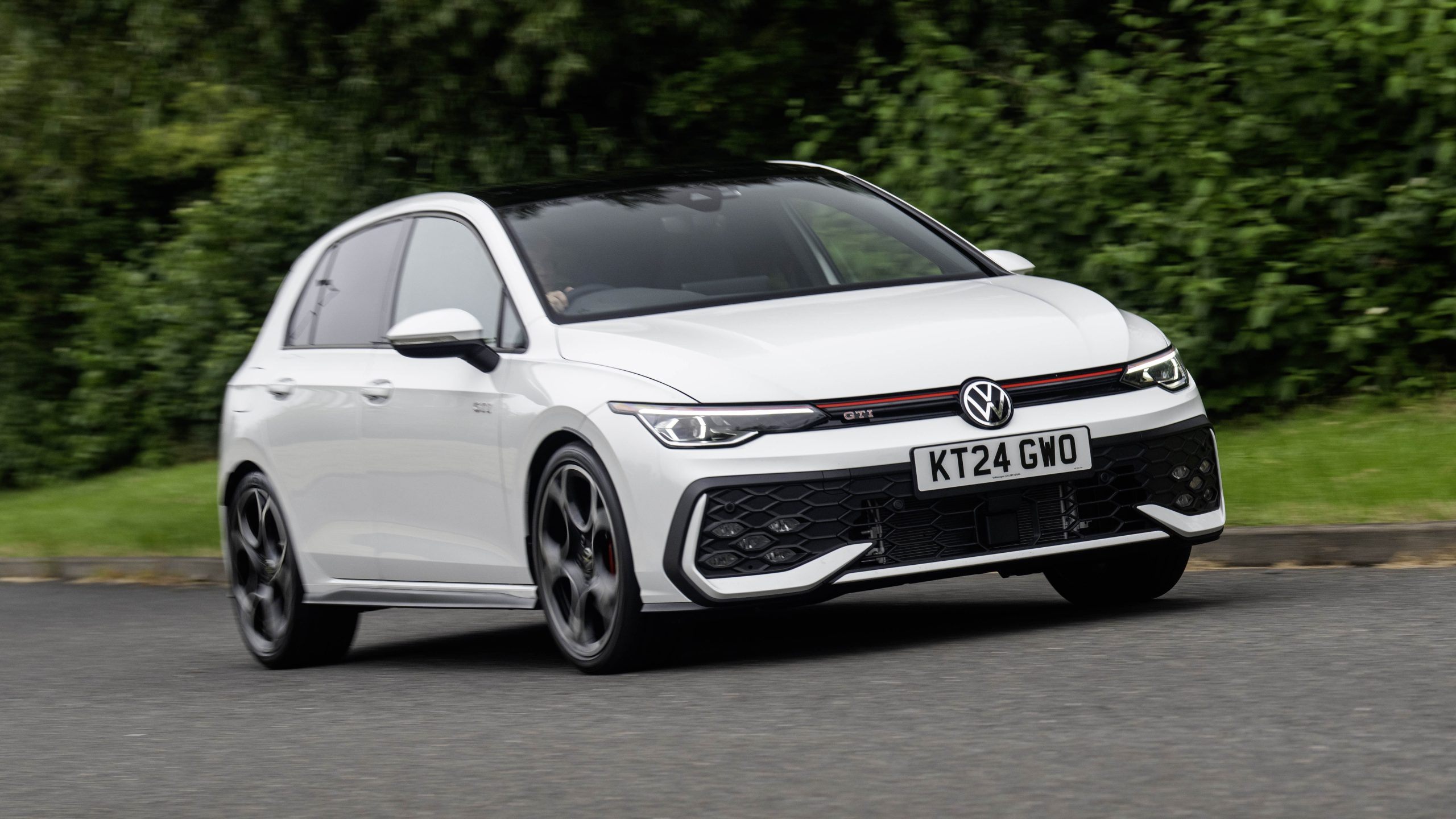
What truly distinguishes the GTI as a modification platform is its premium interior and practical hatchback configuration.
Unlike many sports cars that sacrifice comfort and usability for performance, the GTI starts with a refined, well-appointed cabin that can be enhanced rather than completely rebuilt.
Audio and technology upgrades integrate seamlessly with the European designed interior, while the expansive cargo space behind the rear seats maintains everyday practicality regardless of performance modifications.
Aesthetically, the GTI benefits from Volkswagen’s clean, understated design language. Modifications typically follow an “OEM+” approach, with subtle enhancements like European-specification lighting, modest lowering, and tasteful wheel upgrades that complement rather than overpower the factory design. This approach creates cars that appeal to a more mature audience seeking refined performance rather than overt visual aggression.
The GTI platform also benefits from its position within the broader Volkswagen Group ecosystem. Many upgrades from more expensive Audi models can be adapted to fit the GTI, providing access to premium-grade components at more reasonable prices.
This parts interchangeability extends to drivetrain components as well, with some enthusiasts upgrading to all-wheel-drive systems from the Golf R for ultimate traction.
Modern GTI models come equipped with sophisticated electronic systems that can be leveraged rather than overcome. Performance-oriented software modifications can enhance everything from throttle response to differential behavior, creating a more cohesive driving experience that builds upon the factory engineering rather than fighting against it.
7. BMW 3-Series (E36/E46)
The BMW 3-Series, particularly the E36 (1992-1999) and E46 (1999-2006) generations, represents one of the most compelling entry points into European performance car modification.
These rear-wheel-drive sports sedans and coupes can be found on the used market for remarkably accessible prices, ranging from $3,000-$8,000 for E36 models and $5,000-$15,000 for E46 variants, with the desirable M3 versions commanding premium prices.
What makes these platforms special is their fundamental engineering excellence. Both generations feature sophisticated multilink suspension designs, near-perfect weight distribution, and robust inline-six engines that respond exceptionally well to modifications.
The naturally aspirated M52/M54 engines found in non-M models provide smooth, linear power delivery that can be enhanced through intake, exhaust, and tuning modifications for gains of 20-30 horsepower.
For more ambitious builds, forced induction conversions using supercharger kits from companies like Active Autowerke or turbocharger systems can push output beyond 400 horsepower.
The true stars of the platform are the motorsport-derived S52 (US E36 M3) and S54 (E46 M3) engines. These high-revving inline-sixes respond remarkably well to head work, camshaft upgrades, and exhaust modifications while maintaining their characterful nature and exceptional reliability when properly maintained.
The M versions also feature strengthened chassis components and superior braking systems that provide an even better foundation for track-focused modifications.
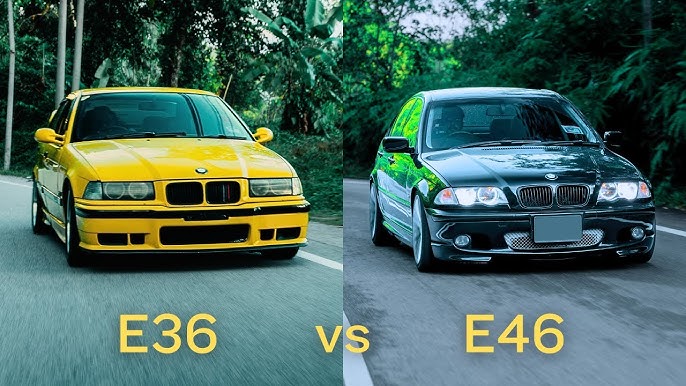
Suspension upgrades represent the most transformative modifications for these platforms. Coilover systems from manufacturers like KW, BC Racing, or Fortune Auto dramatically sharpen handling characteristics, while polyurethane bushing replacements and chassis reinforcement address the platforms’ age-related weak points.
The already capable factory geometry responds exceptionally well to these enhancements, creating vehicles that can outhandle many modern sports cars at a fraction of the cost. Aesthetically, both generations benefit from BMW’s timeless design language.
The clean lines and purposeful stance respond well to subtle enhancements like factory M-Sport body components, properly sized wheels, and tasteful lowering. This “OEM+” approach allows for personalization while maintaining the sophisticated character that attracted enthusiasts to the platform in the first place.
What truly sets these 3-Series generations apart is their dual-nature capability. Even heavily modified examples can maintain reasonable comfort and practicality for daily use, while still delivering exceptional performance when pushed. The four-door variants offer genuine five-passenger capacity, making them practical options for enthusiasts with families.
The platforms also benefit from BMW’s modular component design philosophy, with many parts interchangeable between different models and even different generations.
This parts availability creates opportunities for creative hybridization, with enthusiasts often incorporating the best elements from various BMW models into a single, optimized build.
8. Mitsubishi Lancer Evolution/Subaru WRX
The Mitsubishi Lancer Evolution and Subaru WRX represent the democratization of rally-bred performance, bringing all wheel drive turbocharged technology to accessible price points.
Used examples range from $10,000-$20,000 for earlier models, with later and special editions commanding higher prices, particularly for the discontinued Evolution which has seen significant appreciation.
What distinguishes these platforms in the modification world is their sophisticated all-wheel-drive systems and turbocharged engines designed specifically for performance applications.
Both utilize 2.0-liter turbocharged four-cylinder engines that respond exceptionally well to modifications. Basic bolt-on upgrades like intakes, downpipes, and exhaust systems, paired with ECU tuning, can yield gains of 50-80 horsepower over stock.
More comprehensive builds incorporating upgraded turbochargers, intercoolers, and fueling systems can push output beyond 400 horsepower while maintaining the factory block.
The all-wheel-drive systems represent perhaps the greatest strength of these platforms. The Evolution’s sophisticated Active Yaw Control in later generations and the WRX’s symmetrical all-wheel-drive provide traction advantages that allow these vehicles to put down power more effectively than many higher-horsepower rear-wheel-drive competitors.
These systems can be further enhanced through differential upgrades and controller modifications that alter torque distribution characteristics.
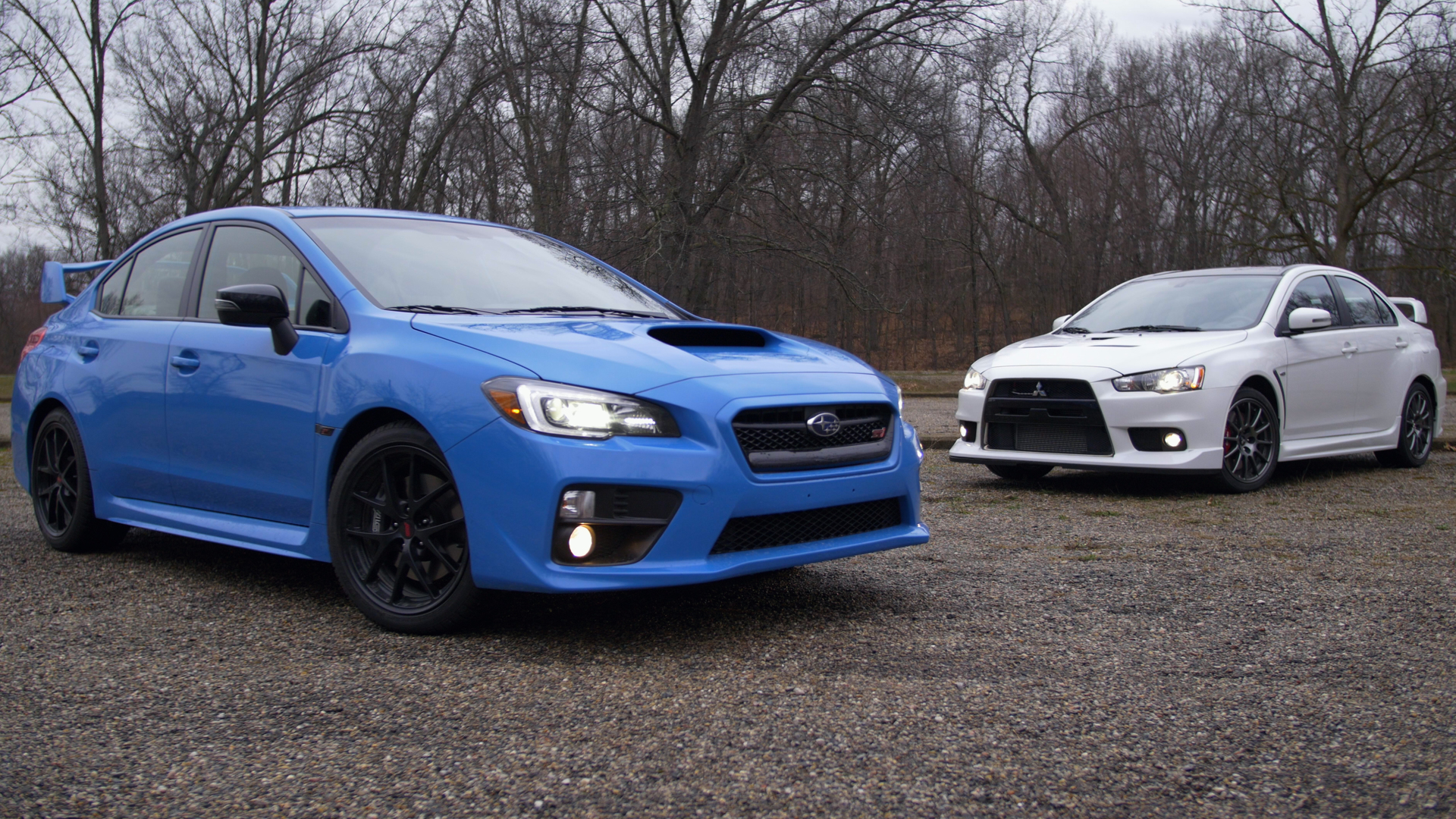
Suspension modifications benefit from the platforms’ rally heritage. Coilover systems designed specifically for these models leverage the factory geometry to create exceptional handling capabilities in varied conditions.
Both platforms respond particularly well to chassis bracing and roll center correction kits that address inherent weak points in the factory design. The result is a level of all-weather performance capability that few competitors can match at any price point.
Aesthetically, both the Evolution and WRX feature distinctive, purpose-driven designs that already communicate their performance intent. Modification typically focuses on enhancing aerodynamic functionality through front lip spoilers, rear diffusers, and functional hood vents that improve cooling.
Wide-body conversions have become increasingly popular, allowing for substantially wider track widths and tire fitments that further enhance cornering capability.
Interior modifications typically focus on enhancing the somewhat basic factory accommodations. Seat upgrades, audio improvements, and gauge additions create more engaging driver environments without sacrificing the practical four-door utility that makes these cars usable for daily drivers despite their performance capabilities.
What truly sets these platforms apart is their comprehensive engineering focused on a singular purpose: delivering maximum performance in varied conditions.
Unlike converted economy cars, both the Evolution and WRX were designed from the ground up with performance as their primary objective, with strengthened chassis components, sophisticated braking systems, and drivetrain configurations optimized for enthusiast use.
The extensive motorsport heritage behind both platforms means that modifications benefit from decades of competition development. This racing DNA shows how cohesively the cars respond to a balanced approach to enhancements, with each system complementing the others rather than creating weak links in the performance chain.
9. Hyundai Veloster N/Kia Stinger GT
The Hyundai Veloster N and Kia Stinger GT represent the new wave of Korean performance cars that have dramatically shifted perceptions of what these brands can deliver.
With used examples of the Veloster N starting around $20,000-$25,000 and Stinger GTs available from $25,000-$35,000, these platforms offer exceptional value with modern technology and warranty advantages that older vehicles can’t match.
What makes these platforms particularly compelling for modification is their overbuilt nature from the factory. The Veloster N’s 2.0-liter turbocharged engine and the Stinger GT’s 3.3-liter twin-turbo V6 were engineered with significant headroom for increased performance.
Basic modifications like intake systems, downpipes, and ECU tuning can yield gains of 40-70 horsepower on either platform while maintaining excellent reliability. The sophisticated factory turbocharging systems respond exceptionally well to these relatively simple enhancements.
Suspension modifications build upon already capable factory setups. The Veloster N’s standard electronically controlled dampers provide multiple personalities from the factory, while aftermarket coilover systems from companies like KW can further enhance handling precision.
The Stinger GT’s longer wheelbase and rear-wheel-drive (or optional all-wheel-drive) platform responds well to chassis bracing and progressive spring rate adjustments that maintain its grand touring character while sharpening responses.
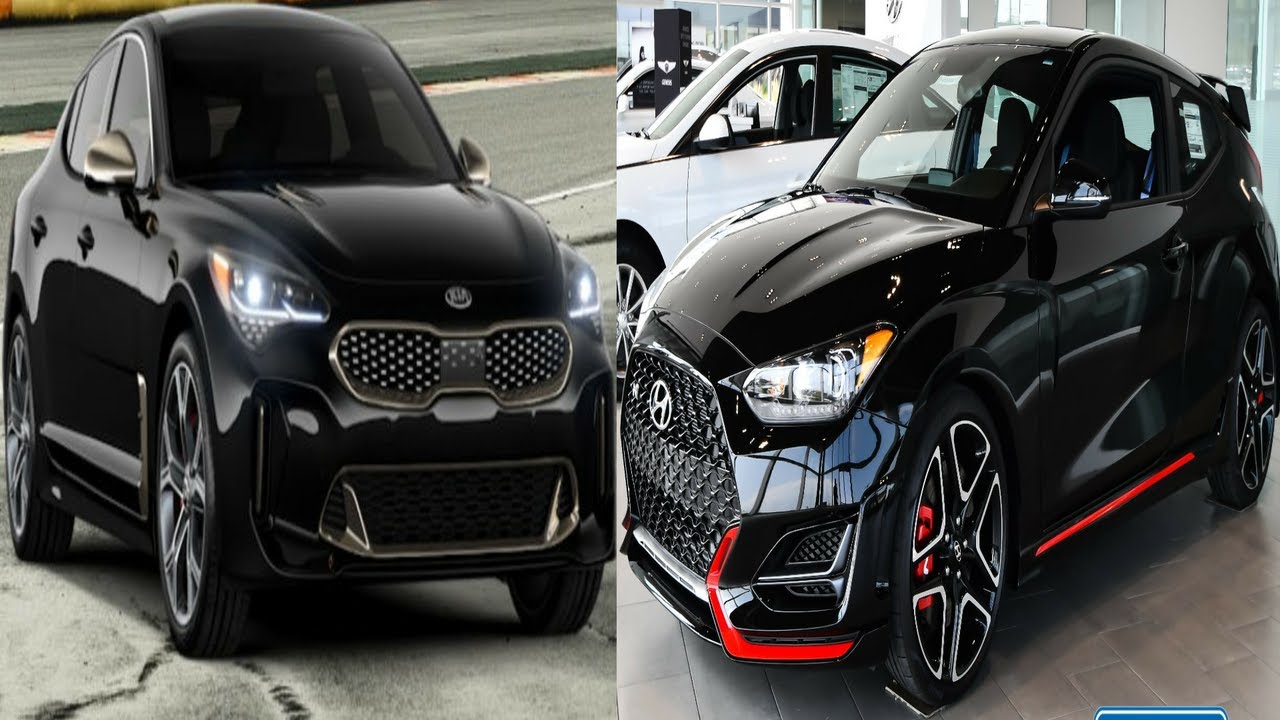
What truly distinguishes these Korean platforms is their combination of performance-focused engineering with exceptional standard technology packages.
The comprehensive infotainment systems, driver assistance features, and comfort amenities provide the modern conveniences that many traditional sports car platforms lack. Modification strategies typically focus on enhancing performance without sacrificing these technological advantages.
Aesthetically, both vehicles feature bold, distinctive styling that breaks from conventional performance car norms. Modifications typically enhance these characteristics rather than completely reimagining them.
For the Veloster N, more aggressive front splitters, rear diffusers, and functional aerodynamic enhancements complement the already extroverted styling. The Stinger GT benefits from subtle lowering, wheel upgrades, and understated visual enhancements that emphasize its grand touring capabilities.
Drivetrain modifications represent another area where these platforms excel. The Veloster N’s already capable limited-slip differential can be enhanced with more aggressive differential fluid for improved power delivery, while the Stinger GT’s transmission benefits from adaptive learning modifications that sharpen shift characteristics without sacrificing refinement.
What sets these Korean performance vehicles apart in the modification world is the manufacturers’ surprisingly supportive stance toward enthusiast modifications.
Unlike many brands that take adversarial positions regarding warranty coverage for modified vehicles, Hyundai and Kia have shown relative openness to reasonable performance enhancements, particularly when using their own performance parts catalogs.
The rapidly growing aftermarket support for these platforms reflects their increasing popularity among enthusiasts seeking modern performance alternatives to established brands. This expanding ecosystem of parts and tuning expertise continues to unlock new potential from these overbuilt platforms.
10. Chevrolet Camaro V6/Dodge Challenger V6
The V6 variants of the Chevrolet Camaro and Dodge Challenger represent perhaps the best-kept secrets in the budget performance world. Available on the used market for $15,000-$25,000 depending on age and condition, these entry-level muscle cars deliver surprisingly capable performance straight from the factory while offering substantial headroom for enhancement.
What makes these platforms particularly appealing for modification is their shared DNA with their V8-powered siblings. Both utilize the same fundamental chassis, suspension geometry, and brake designs as their more expensive counterparts, meaning many handling and appearance upgrades are directly interchangeable.
This part’s commonality creates an exceptionally broad aftermarket ecosystem that benefits the V6 models. The modern V6 engines in both platforms defy old stereotypes about “base model” performance.
The Camaro’s 3.6-liter V6 produces 335 horsepower in recent iterations, while the Challenger’s 3.6-liter Pentastar delivers 305 horsepower. Both respond well to basic bolt-on modifications like cold air intakes, cat-back exhaust systems, and ECU tuning for gains of 20-35 horsepower.
For those seeking more substantial increases, forced induction options from companies like Procharger offer pathways to 450+ horsepower while maintaining reasonable reliability.
Where these platforms truly excel is in their handling potential. Despite their substantial size, modern chassis tuning and electronic aids make them far more capable than their visual mass might suggest.
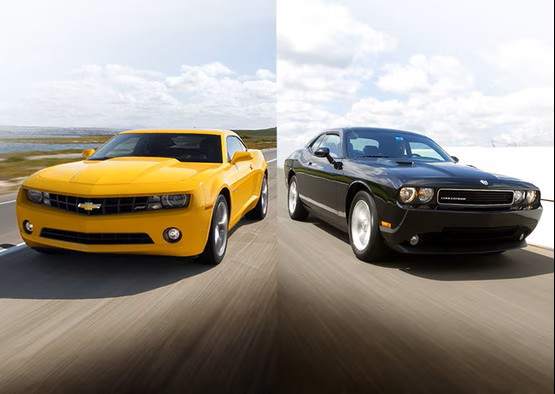
Suspension upgrades like progressive-rate lowering springs, adjustable sway bars, and chassis bracing can transform these grand tourers into surprisingly capable corner carvers without sacrificing their comfortable cruising demeanor.
Aesthetically, both platforms benefit from aggressive, muscular styling straight from the factory. Modification strategies typically focus on enhancing these characteristics through front splitters, side skirts, and subtle rear spoilers that improve both appearance and aerodynamic functionality.
Many enthusiasts opt for wheel and tire packages that maintain factory diameter but increase width for improved grip, often paired with subtle fender modifications to accommodate the wider footprint.
Interior modifications typically focus on enhancing the driver-vehicle connection through shifter improvements, steering wheel upgrades, and seat enhancements that increase support during spirited driving.
Modern infotainment systems in both platforms provide excellent foundations for technology integration that many older sports cars can’t match.
What truly distinguishes these V6 muscle cars is their balanced approach to performance. With approximately 55/45 weight distribution compared to the more nose-heavy V8 models, the V6 variants often deliver more neutral handling characteristics that reward skilled drivers.
The reduced mass over the front wheels creates a more responsive turn-in and better balance during transitional maneuvers. The substantial weight savings compared to V8 models (often 200-300 pounds) benefit every aspect of performance from acceleration to braking to fuel economy.
This efficiency advantage makes V6 models more practical daily drivers while still delivering genuine performance credentials that outperform many dedicated sports cars from just a decade ago.
Also Read: 12 Electric Sports Cars Gaining Traction Among Hobbyists

